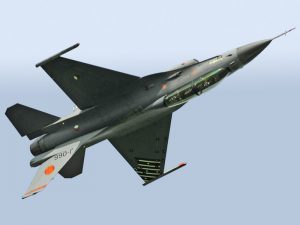How can we ensure that generators in next-generation fighter jets have sufficient capacity to power all electronics under all circumstances? NLR is modelling the energy management of fighter jets.
In 2011, the Dutch Ministry of Defence commissioned NLR to study risks in the power management of future military aircraft. The prestigious United States Air Force Research Laboratory (AFRL) in Dayton, Ohio also collaborates on this research. The programme, named Fighter Aircraft Robust Power Management, will run until at least 2015.
In the current generation of fighter jets, such as the F-16 used by the Royal Netherlands Air Force, there is minimal risk of system failure, because the different systems barely compete for power. Moreover, the generator produces enough capacity to supply all the electronics under all circumstances. However, it is expected that the generators of next-generation fighter jets will have to generate considerably more power. These aircraft contain more sensors and other electrical systems, including alternatives for the current hydraulic steering of movables. In time, this will also apply to weaponry, such as powerful lasers, which require large amounts of power.
All this requires an integrated aircraft design which takes into account the dynamics of power consumption. Such designs will not only seek to ensure sufficient electrical capacity, but will also seek to minimise heat generated, which will be a key concern in power management as a whole. The latter concern is amplified by the need for fighter aircraft to minimise visibility to enemy surveillance systems. That means the design must also take into account the internal cooling of all equipment – a process which itself requires energy.
In 2011, the NLR began modelling systems for power management. These models will be validated using the Orange Jumper, the F-16 test aircraft belonging to the Royal Netherlands Air Force, by flying the demonstration programme, that is also flown at air shows. This demo programme will serve as a reference for the verification and validation of the models, which can then be used to optimally plan missions for modified and next-generation fighter aircraft.

